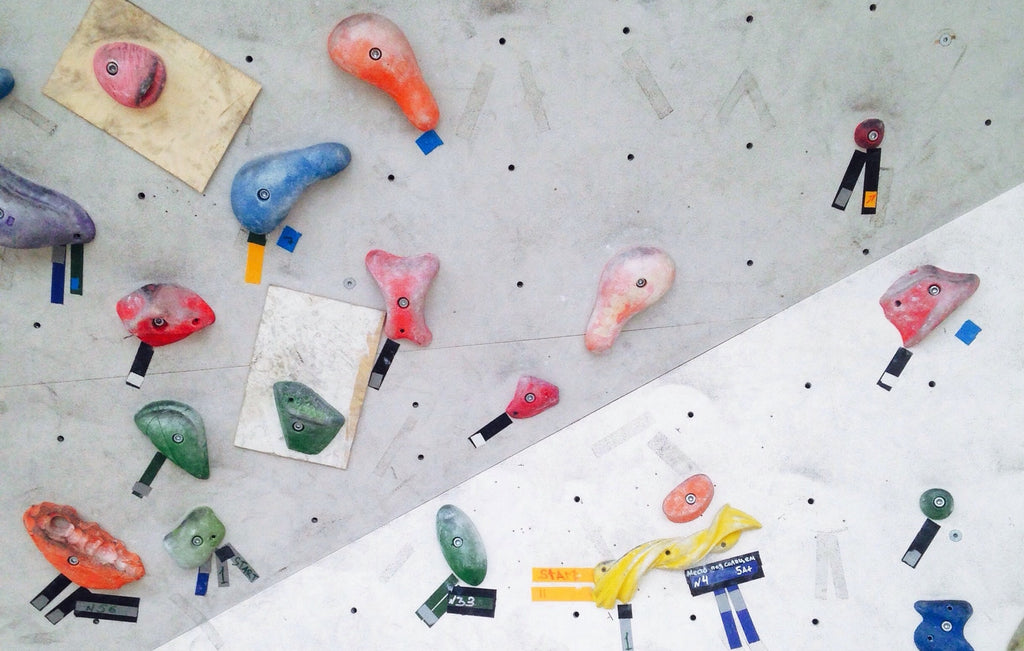How To Use Liquid Chalk For Climbing

Liquid chalk has a couple of serious benefits over more traditional climbing chalk powder: it’s more performant, lasts longer, acts as a disinfectant, leaves less traces on the rock and creates less dust. It has one major disadvantage: it’s harder to apply mid-route than chalk powder.
We recommend everyone at the very least use liquid chalk as a base layer. The magnesium carbonate in liquid chalk acts like traditional climbing chalk but because it is applied in a far thinner layer it tends to optimise the friction. One of the major mistakes climbers make is adding too much chalk powder: the excess chalk actually acts as a lubricant, decreasing friction. You want a thin layer of chalk on your fingers and liquid chalk achieves just that.
An additional benefit of using liquid chalk as a base layer is that the alcohol in the liquid chalk completely removes the natural oils that are on your skin. A base layer of liquid chalk at the beginning of your session allows you to start climbing with less oil on your hands, increasing overall friction. The alcohol also acts as a very effective disinfectant, allowing you to clean safely in germ-infested gyms.
The main reason why we are such big fans of liquid chalk is an environmental one: it’s a far cleaner product than climbing chalk powder. It leaves less traces on the holds which helps us keep our outdoor climbing areas look pristine and natural. And when you’re climbing indoors the gyms staff will thank you for using liquid chalk because it creates less dust.
In a typical bouldering session you will want to apply a good base layer at the beginning of your session and occasionally refresh it after a couple of boulders. If you have naturally dry skin you probably don’t even need extra chalk powder. If you feel like you still need powder you can do small top-ups just before you start to climb.
After you have applied your base layer of liquid chalk you can use the rest moments in-between attempts to apply a little extra liquid chalk, typically just to your finger tips. We recommend the following basic procedure for applying liquid chalk.
Shake The Tube. Liquid chalk is a suspension of magnesium carbonate in alcohol. The alcohol and chalk tend to separate in the bottle, os it’s crucial you give it a good shake before applying it to your skin, especially if the tube hasn’t been used for a while.
Close The Cap. The alcohol in liquid chalk evaporates really quickly. Most brands contain around 70% alcohol, which helps to make it quick-drying, but this also makes it prone to drying out inside the bottle. So close the cap every time after applying.
Apply Coin Size. Apply about a 2 EUR coin size of liquid chalk to your hand palm and spread it over both hands for the base layer. Applying the base layer really should be like “washing” your hands. You want a good layer everywhere on your hands. A good base layer looks like you are wearing white gloves.
Apply Pea Size. For top-ups you can use far less if you have a good base layer present. A pea-sized drop is enough to re-apply some liquid chalk to your finger tips. Apply it directly to the middle finger of each hand and use your thumb to spread it over your tips.
Wash Your Hands. Make sure you wash your hands after climbing. It’s good hygiene but you also want to get the layer of chalk off your hands as quick as possible. While having dry skin during climbing is desirable, after climbing re-hydration is the name of the game. Walking around with chalk on your hands wildly them out and slow down your finger skin’s recovery.
Moisturize Your Skin. Immediately after climbing you will want to use a moisturising cream to help your skin recover faster. We recommend a general non-greasy moisturising cream. Overnight you may want to use a beeswax-based product to help recovery further.
You will find that once you get used to liquid chalk as a base layer you won’t want to go back to the old ways of climbing chalk powder.
Photo by David Pisnoy
